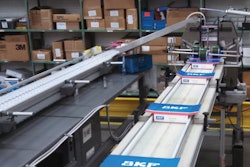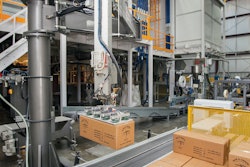In package design (for purposes of this article, graphics, as opposed to structural), “less is more” has become a mantra. Need proof? Start with the design firms, big and small, that chime it. Packaging trade magazines join in with articles about designs that purportedly embody the phrase. Contest judges add their voices, commonly describing winning designs as clean, sleek, and uncluttered.
There’s a catchiness to “less is more,” likely owing to its counter-intuitive—even contradictory—nature. The opposite argument also can be made, that the phrase reflects our preference for the simplified over the complex. It would be great if corporations, through their operations, could make KISS stand for Keep It Super Simple.
Brand managers all the way up to Vice-Presidents of Corporate Imaging (or some other title to that effect) can find themselves sitting through presentations that extol the merits of less-is-more package design. CEOs wouldn’t be out-of-place in such audiences, either, not if the corporations are devoted to the strategic leveraging of packaging for competitive advantage.
Managers, however, need to understand that effective package design relies on too many variables to be distilled into a single phrase. It is one thing to accept “less is more” as a guideline and quite another to accept it as an instruction to be followed across the board.
First, managers should determine what goals the package design is expected to achieve. Then, if a “less is more” approach helps in reaching those goals, by all means go that way. Such an approach simplifies decision-making, but it doesn’t make decision-making simple. There’s more to consider.
“Less” is a comparative concept, so naturally we have to ask less than what? Applied to package design, the answer differs, depending on whether the project is a new product launch, a redesign, or a product-line extension. Each imposes its own starting point for comparisons; for example, with a launch (unlike a redesign and extension), there’s no already-in-use design to be deemphasized or lessened. That said, regardless of the type of project, there should be comparisons to the competition, starting within the category and extending as far as practical.
Sticking with the comparative theme, a related question is less than which? The overall effect of a package design is achieved through the interactions among the design elements, i.e. colors, images, copy, and fonts; therefore, which element(s) should be deemphasized to achieve an overall improvement? From the preceding sentences, less can’t be achieved in a vacuum. Less of one element can unavoidably result in more of another; for example, less color might necessitate more (as in an increased role) of another element.
Packaging is part science, part art, and whereas all types of art are inherently subjective, packaging differs in ways that should not be overlooked by managers. It can be said that paintings, sculptures, and other artistic expressions represent art for arts sake. That’s not true of package design; consequently, a manager should never confuse his/her role with that of an art critic who opines about whether less should have been done with brushstrokes and chisel-strikes. The desired destination for the package is at the place-of-use, meaning that a purchase has been made, a relevant indicator (although not the only one) of the design’s effectiveness. If the package ends up on display at the Smithsonian, great, provided that it is because it has obtained the status of cultural icon.
Communication, too, is said to be an art form, and there’s no denying that a package design is expected to communicate, but communicate what and communicate to whom? Before addressing those questions, it’s helpful to distinguish between package design and other forms of communication. Writing can benefit from a less-is-more approach (as any editor will attest). Speech can, too; look no further than the positive connotations of such modifiers as “pithy,” ”laconic,” “succinct,” and “concise.” Not to mention the adage, “Brevity is the soul of wit.” It doesn’t necessarily follow, however, that package design always lends itself to addition by subtraction.
What a package design should communicate can be evaluated in terms of what is wanted vs. what is mandated. What’s always wanted is that the package design effectively communicates such essentials as brand, product category, and line-variety, along with whatever aura advantageously differentiates the product. And depending on the type of product, one or more federal regulations mandate that the package communicates certain information. If the less-is-more approach is to be applied to what is to be communicated, it has to be done by melding the wanted and the mandated.
A package design should communicate positively to the target consumer/customer. But hidden within that self-presenting answer are myriad factors—demographic, psychographic, and ethnographic. Far too many factors, in fact, to categorically conform to a less-is-more approach. The product personalities that package designs can communicate are limitless: zany, serious, staid, adventurous, sophisticated, irreverent, masculine, feminine, mature, and juvenile, among others. A package design that is loud and busy, for example, might communicate the intended personality of the product. To quiet that design or to calm it by taking a less-is-more approach without due regard for the aforementioned factors might sabotage the product’s success.
On another note, technology can be an impediment to less is more. An example is advances in printing, one being presses with increased numbers of color stations, another being the growing capabilities of digital. Also making an impact is smart packaging, for example, package designs that interface with mobile technology, particularly apps. Increasingly challenged by the pressures of competition, managers might be inclined to thinking of more rather than of less concerning the number and variety of elements incorporated into a package design.
Regardless of the amount of credence that managers place in a less-is-more approach, the resulting designs should be evaluated as objectively as possible. That introduces the subject of package design research methodologies, a subject for a future article. As for this one, suffice it to say that the subject of less is more has been covered—more or less.
___________________________________________________________________________________________
Sterling Anthony is a consultant, specializing in the strategic use of marketing, logistics, and packaging. His contact information is: 100 Renaissance Center- P.O. Box 43176; Detroit, MI 48243; 313-531-1875 office; 313-531-1972 fax; [email protected]; www.pkgconsultant.com


























